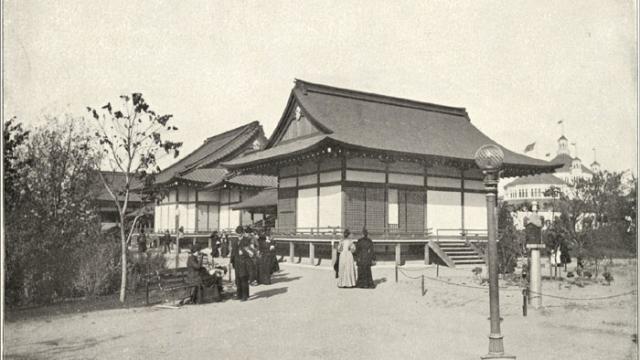The 1893 World’s Columbian Exposition was the prototypical World’s Fair. It brought together wonders of engineering, the latest technologies and consumer products, and music and art from far-off lands. Sadly, almost all of its buildings are no more — but in Chicago, three lovely fragments of one have resurfaced.
Discovered in a storage facility operated by the Park District, the three beautifully carved Japanese sliding doors, called fusuma, were long thought to be lost along with so much of the fair’s original art and architecture. “These paintings bring to life, in vivid colour, a moment of history that had previously been lost forever,” said Janice Katz, associate curator of Japanese art at the Art Institute, in a statement posted to the Office of the Mayor. Here’s a shot of one of the doors, showing what seems to be two fowl (perhaps phoenix) and another, smaller bird, against a gold backdrop:
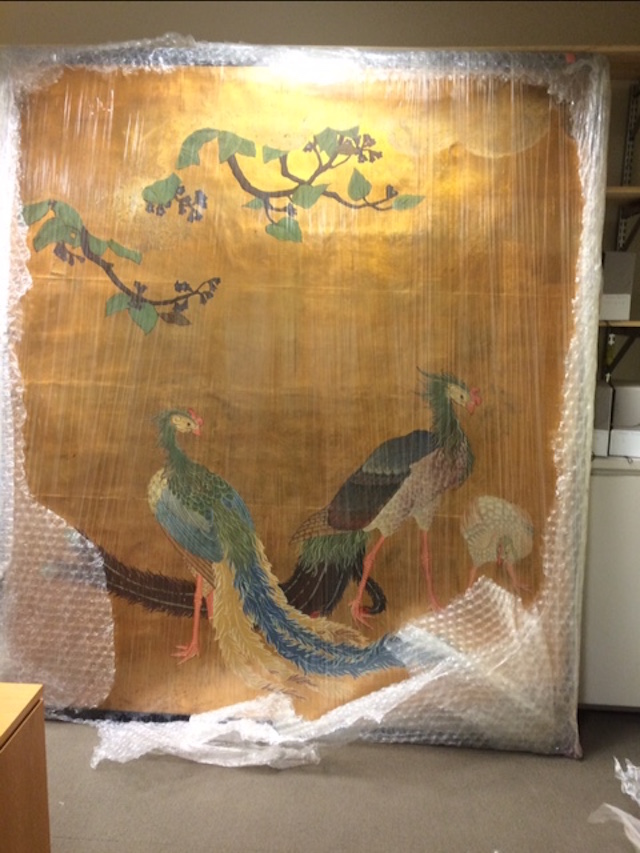
The discovery is incredibly exciting for Chicagoans, and for fans of the historic fair (which will serve as a backdrop to a Martin Scorsese-directed film adaption of The Devil in the White City).
So what do we know about the building from which these remarkable painted doors came? Well, they were made by a Japanese artist named Hashimoto Gaho, who was one of many artists and craftsmen who worked on the 1893 pavilion. Japan was one of many countries that built structures on the grounds of the fair to show off their local art, architecture, and progress in general — but Japan’s contribution must have been one of the most beautiful.
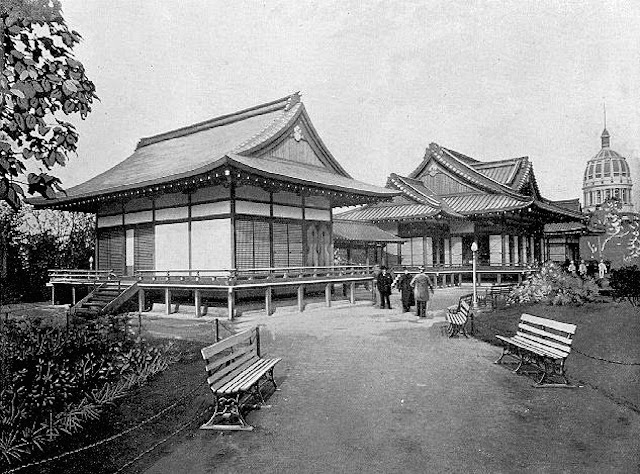
It was called the Ho-o-den, or the Hall of the Phoenix, the building was actually built by a group of Japanese craftsmen, a few of which are depicted in this trio of shots taken during construction.
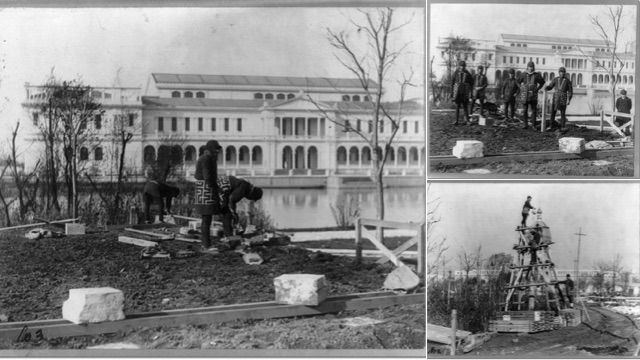
The pavilion was reportedly very popular — it was a demonstration of graceful and foreign carpentry that would have been incredibly unusual in America at the time. It was “the first real introduction of Japanese architecture to the Midwest,” writes Stanley Appelbaum in his photographic record of the fair. The pavilion may have even influenced Frank Lloyd Wright as he shaped his ideas about Prairie Style.
Inside, carvings and paintings by Japanese artists were on view. The Japanese scholar Okakura Kakudzo, who helped popularise Japanese art and craft in the US at the turn of the century, described the origin of the phoenix in an essay in The Decorator and Furnisher in 1894, available on JSTOR. He described the origins of the myth of the phoenix, as well as the sliding door in question:
This bird, to use a figure of speech, has flown swiftly over the the wide Pacific Ocean, bringing with it works of art from its native land, which, though comparatively insignificant, contributed, to some degree, to the beauty of the World’s Fair.
The painting on the wall of the central room, depicting male and female phoenixes at play with their young, is by Professor Hashimoto, of the Tokyo Fine Art School, and his pupils. It is emblematic of the peaceful reign of the Tokugawa Shoguns… a period extending from the beginning of the seventeeth century down to the restoration when the present Emperor came into power in 1868.
This rare shot of the interior, found in Kakudzo’s essay, probably played a role in the Art Institute identifying the discovery as authentic — you can see similar paintings of phoenix-esque fowl on the sliding fusuma on the right:
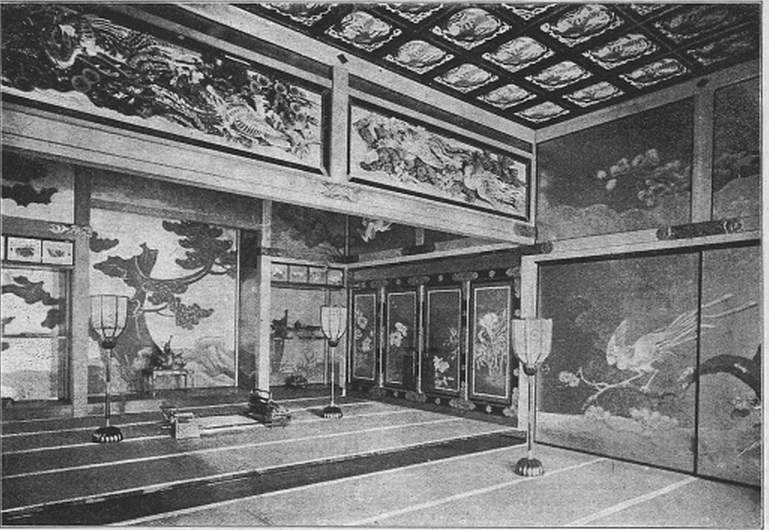
The pavilion was built on the Wooded Island, an island in the fair’s artificial lagoon designed, of course, by Frederick Law Olmsted. Olmsted was clearly aware of how incredibly overwhelming the sights and sounds of the fair would be to visitors, and designed the island to be a point of respite — a place where you could commune with a carefully manicured form of “nature.”
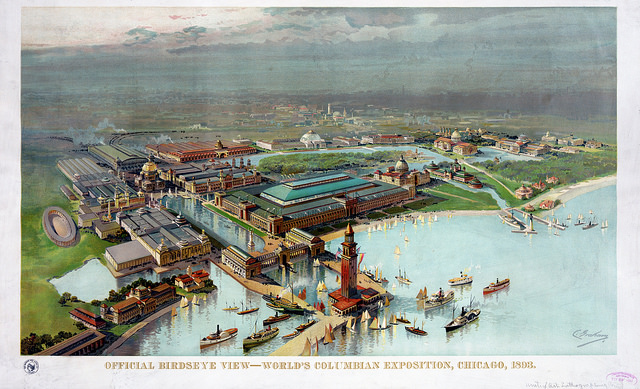
Bird’s eye view with the Wooded Isle in the center. Picture: Flickr.
The pavilion served as the gem of the island, as Norton Center for the Arts’ Bruce Richardson explains. It was a quiet moment in the fair’s rip-roaring, electrifying, industrial might:
The island sanctuary was the one place where fairgoers just relaxed. It was a great spot for lovers, too. As the sun set, the island was lit by little “fairy lights” of coloured glass arranged along the paths. Unlike the bright lights of electricity that drove the rest of the fair, the fairy lights were small warm-coloured oil lamps. This oasis in a sea of technology was the one still spot where you could stop and take it all in.
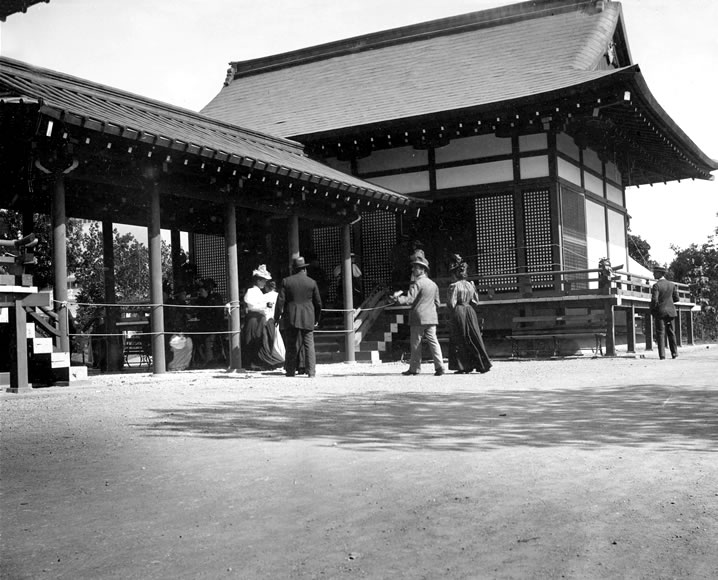
Today, the Wooded Island is being restored as part of a plan to revamp Jackson Park. But sadly, like all but two of the Fair’s buildings, the painstakingly-crafted pavilion is no more. According to Chicagoist, two different fires destroyed the pavilion during World War II, and it was razed.
As the city points out, this isn’t actually the first time parts of the pavilion have been discovered. In the 1970s, workers discovered a series of intricately-carved Japanese panels beneath the bleachers of Soldier Field, seemingly put there during the fires for safe-keeping. Those carvings are now on display at the Art Institute.
The city now has plans to work with the Art Institute once more to restore these sliding doors, and perhaps they will go on display next to the other rediscovered carvings, reunited more than a century after they were enjoyed by visitors to the World’s Fair. Who knows what other lost relics of the White City are laying around beneath bleachers and in storage closets?
[City of Chicago; h/t Chicago Tribune; lead image via Wikimedia Commons]
